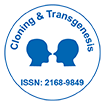
Cloning & Transgenesis
Open Access
ISSN: 2168-9849

ISSN: 2168-9849
Uday YH Abdullah, Imad IA Al- Sultan, Haitham M Jassim, Yasir A H Ali, Rana M Khorsheed and Atif A Baig
The purpose of this manuscript is to provide a current overview on the Shiga Toxin / verotoxin-producing Escherichia coli (STEC) hemolytic uremic syndrome (HUS) with emphasis on the epidemiology, clinical and laboratory manifestations, pathogenesis, recommended assessment, treatment strategies and prognosis. Hemolytic uremic syndrome (HUS) is a cause of the community-acquired acute renal insufficiency in young children. The outbreak in Germany illustrated both the emerging importance of non-O157 serotypes as agents of human disease and the potential for large-scale methods of food production and distribution to result in widespread disease. Children with STEC-induced HUS typically have a prodromal illness that can rapidly develop severe and multisystem life-threatening complications. STEC infection is acquired through contaminated food or water. Thrombotic microangiopathy is the mechanism of the development of the characteristic pathologic lesion of HUS. Any patient with a recent history of diarrhea and signs of a multi-organ disorder requires a proper assessment for the possible development of HUS. Appropriate laboratory testing for both O157 and non-O157 serotypes, as well as prompt initiation of infection control procedures for confirmed or suspected cases, will facilitate follow-up investigation to identify the source of disease and will help to prevent secondary transmission. Currently, diagnostic test to predict which patients will develop HUS is not available. Supportive care and intravenous fluid replacement are the cornerstones of treatment because of the current lack of safe and specific therapeutic intervention. Culizumab and/or plasma treatment may be considered in patients with severe CNS involvement who have a poor prognosis. None of the multiple therapeutic agents including antithrombotic agents, plasma exchange and/or plasma infusion, tissue-type plasminogen activator, and oral Shiga toxin-binding agent that have been used is recommended. For most patients with uncomplicated STEC-associated gastroenteritis who are treated with supportive care, the prognosis was excellent. Public health interventions are the key to prevent STEC-associated diarrhea and HUS. Researches will improve the care of patients with different HUS types in the years to come. The identification of genetic factors associated with HUS will contribute to a better insight of the pathogenesis of HUS and will have potential therapeutic and preventive implications.